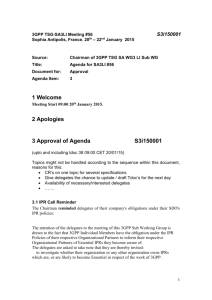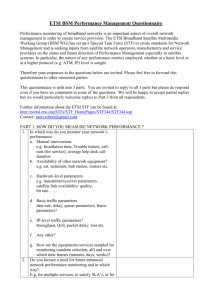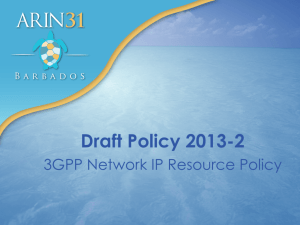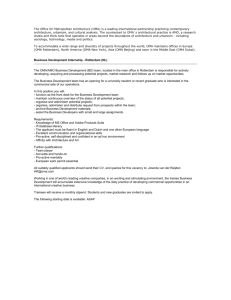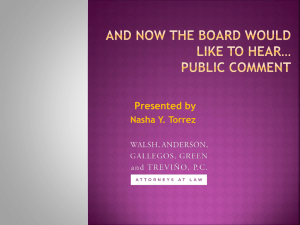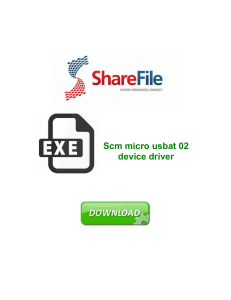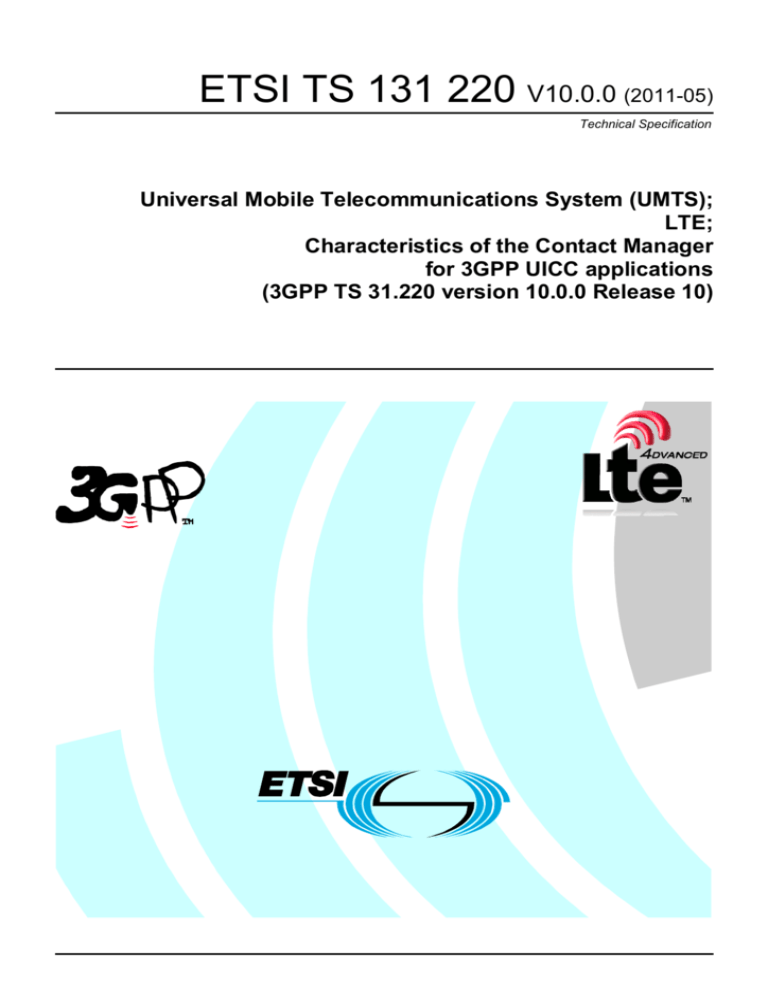
ETSI TS 131 220 V10.0.0 (2011-05)
Technical Specification
Universal Mobile Telecommunications System (UMTS);
LTE;
Characteristics of the Contact Manager
for 3GPP UICC applications
(3GPP TS 31.220 version 10.0.0 Release 10)
3GPP TS 31.220 version 10.0.0 Release 10
1
ETSI TS 131 220 V10.0.0 (2011-05)
Reference
RTS/TSGC-0631220va00
Keywords
LTE, UMTS
ETSI
650 Route des Lucioles
F-06921 Sophia Antipolis Cedex - FRANCE
Tel.: +33 4 92 94 42 00 Fax: +33 4 93 65 47 16
Siret N° 348 623 562 00017 - NAF 742 C
Association à but non lucratif enregistrée à la
Sous-Préfecture de Grasse (06) N° 7803/88
Important notice
Individual copies of the present document can be downloaded from:
http://www.etsi.org
The present document may be made available in more than one electronic version or in print. In any case of existing or
perceived difference in contents between such versions, the reference version is the Portable Document Format (PDF).
In case of dispute, the reference shall be the printing on ETSI printers of the PDF version kept on a specific network drive
within ETSI Secretariat.
Users of the present document should be aware that the document may be subject to revision or change of status.
Information on the current status of this and other ETSI documents is available at
http://portal.etsi.org/tb/status/status.asp
If you find errors in the present document, please send your comment to one of the following services:
http://portal.etsi.org/chaircor/ETSI_support.asp
Copyright Notification
No part may be reproduced except as authorized by written permission.
The copyright and the foregoing restriction extend to reproduction in all media.
© European Telecommunications Standards Institute 2011.
All rights reserved.
TM
TM
TM
TM
DECT , PLUGTESTS , UMTS , TIPHON , the TIPHON logo and the ETSI logo are Trade Marks of ETSI registered
for the benefit of its Members.
TM
3GPP is a Trade Mark of ETSI registered for the benefit of its Members and of the 3GPP Organizational Partners.
LTE™ is a Trade Mark of ETSI currently being registered
for the benefit of its Members and of the 3GPP Organizational Partners.
GSM® and the GSM logo are Trade Marks registered and owned by the GSM Association.
ETSI
3GPP TS 31.220 version 10.0.0 Release 10
2
ETSI TS 131 220 V10.0.0 (2011-05)
Intellectual Property Rights
IPRs essential or potentially essential to the present document may have been declared to ETSI. The information
pertaining to these essential IPRs, if any, is publicly available for ETSI members and non-members, and can be found
in ETSI SR 000 314: "Intellectual Property Rights (IPRs); Essential, or potentially Essential, IPRs notified to ETSI in
respect of ETSI standards", which is available from the ETSI Secretariat. Latest updates are available on the ETSI Web
server (http://webapp.etsi.org/IPR/home.asp).
Pursuant to the ETSI IPR Policy, no investigation, including IPR searches, has been carried out by ETSI. No guarantee
can be given as to the existence of other IPRs not referenced in ETSI SR 000 314 (or the updates on the ETSI Web
server) which are, or may be, or may become, essential to the present document.
Foreword
This Technical Specification (TS) has been produced by ETSI 3rd Generation Partnership Project (3GPP).
The present document may refer to technical specifications or reports using their 3GPP identities, UMTS identities or
GSM identities. These should be interpreted as being references to the corresponding ETSI deliverables.
The cross reference between GSM, UMTS, 3GPP and ETSI identities can be found under
http://webapp.etsi.org/key/queryform.asp.
ETSI
3GPP TS 31.220 version 10.0.0 Release 10
3
ETSI TS 131 220 V10.0.0 (2011-05)
Contents
Intellectual Property Rights ................................................................................................................................2
Foreword.............................................................................................................................................................2
Foreword.............................................................................................................................................................5
Introduction ........................................................................................................................................................5
1
Scope ........................................................................................................................................................6
2
References ................................................................................................................................................6
3
Definitions, symbols and abbreviations ...................................................................................................7
3.1
3.2
3.3
4
4.1
4.2
4.2.1
4.2.2
4.2.3
4.2.4
4.3
4.4
4.5
4.5.1
4.5.2
4.5.3
4.6
4.7
4.8
Definitions .......................................................................................................................................................... 7
Symbols .............................................................................................................................................................. 7
Abbreviations ..................................................................................................................................................... 7
Contact Manager External interface characteristics .................................................................................7
Reference model ................................................................................................................................................. 7
External interface definition ............................................................................................................................... 8
General.......................................................................................................................................................... 8
Contact Manager Server capabilities ............................................................................................................ 8
Contact Manager External client capabilities ............................................................................................... 8
Contact Manager Server and External Client capabilities ............................................................................ 8
Access rules ........................................................................................................................................................ 9
Server configuration ........................................................................................................................................... 9
External Client configuration ........................................................................................................................... 10
Framework .................................................................................................................................................. 10
Basic configuration ..................................................................................................................................... 10
User Actions configuration ......................................................................................................................... 10
Contacts grouping............................................................................................................................................. 10
3GPP specific contacts elements ...................................................................................................................... 11
Synchronization with an external device .......................................................................................................... 11
Annex A (normative):
Contact Manager Provisioning DTD ..........................................................12
A.1
Document Type Definition.....................................................................................................................12
A.2
DTD Description ....................................................................................................................................12
Annex B (normative):
User Actions DTD ..........................................................................................13
B.1
Document Type Definition.....................................................................................................................13
B.2
DTD Description ....................................................................................................................................13
Annex C (normative):
Groups definition DTD ..................................................................................15
C.1
Document Type Definition.....................................................................................................................15
C.2
DTD Description ....................................................................................................................................15
Annex D (normative):
vCard properties requirements and extensions ..........................................16
D.1
vCard properties requirements ...............................................................................................................16
D.2
vCard 3GPP extensions ..........................................................................................................................16
Annex E (informative):
Mapping of OMA DS functionalities and the Contact Manager ...............17
Annex F (informative):
Contact Manager XML files examples ........................................................19
F.1
Provisioning XML file example .............................................................................................................19
ETSI
3GPP TS 31.220 version 10.0.0 Release 10
4
ETSI TS 131 220 V10.0.0 (2011-05)
F.2
User Actions XML file example ............................................................................................................19
F.3
Groups Definition XML file...................................................................................................................20
Annex G (informative):
Change history ...............................................................................................21
History ..............................................................................................................................................................22
ETSI
3GPP TS 31.220 version 10.0.0 Release 10
5
ETSI TS 131 220 V10.0.0 (2011-05)
Foreword
This Technical Specification has been produced by the 3rd Generation Partnership Project (3GPP).
The contents of the present document are subject to continuing work within the TSG and may change following formal
TSG approval. Should the TSG modify the contents of the present document, it will be re-released by the TSG with an
identifying change of release date and an increase in version number as follows:
Version x.y.z
where:
x the first digit:
1 presented to TSG for information;
2 presented to TSG for approval;
3 or greater indicates TSG approved document under change control.
Y the second digit is incremented for all changes of substance, i.e. technical enhancements, corrections,
updates, etc.
z the third digit is incremented when editorial only changes have been incorporated in the document.
Introduction
The present document defines the external interface characteristics of the Contact Manager for 3GPP UICC applications
(e.g. USIM [3] and ISIM [4]). The Contact Manager provides an interface for the management of contact information
including rich content without any structural limitations.
The Contact Manager Server application resides on the UICC, an IC card specified in TS 31.101 [2]. TS 31.101 [2]
specifies the application independent properties of the UICC/terminal interface such as the physical characteristics.
The external interface between the Contact Manager Server application on the UICC and the Contact Manager Client
application on the ME enables the synchronization of the contact information, contacts grouping, configuration of
contact structure, configuration of the triggering mechanism, and configuration of user actions which may be performed
using contact information.
ETSI
3GPP TS 31.220 version 10.0.0 Release 10
1
6
ETSI TS 131 220 V10.0.0 (2011-05)
Scope
The present document defines the Contact Manager for 3GPP UICC applications based on OMA DS [7].
The present document specifies the external interface between the Contact Manager Server in the UICC and the Contact
Manager External Client in the ME;
Any internal technical realization of either the Contact Manager Server or clients is only specified where these are
reflected over the interfaces.
2
References
The following documents contain provisions which, through reference in this text, constitute provisions of the present
document.
• References are either specific (identified by date of publication, edition number, version number, etc.) or
non-specific.
• For a specific reference, subsequent revisions do not apply.
• For a non-specific reference, the latest version applies. In the case of a reference to a 3GPP document (including
a GSM document), a non-specific reference implicitly refers to the latest version of that document in the same
Release as the present document.
[1]
3GPP TR 21.905: "Vocabulary for 3GPP Specifications".
[2]
3GPP TS 31.101: "UICC-Terminal Interface, Physical and Logical Characteristics".
[3]
3GPP TS 31.102: "Characteristics of the Universal Subscriber Identity Module (USIM)
application".
[4]
3GPP TS 31.103: "Characteristics of the IP Multimedia Services Identity Module (ISIM)
application".
[5]
3GPP TS 31.111: "USIM Application Toolkit (USAT)".
[6]
OMA SCWS: "OMA TS Smartcard Web Server v1_0-20070209-C", www.openmobilealliance.org
[7]
OMA DS: "OMA TS DS Protocol V1.2", www.openmobilealliance.org
[8]
OMA vObject Profile: "OMA TS vObject OMA Profile V1.0", www.openmobilealliance.org
[9]
ETSI TS TS 102 483 V8.1.0: "UICC-Terminal interface; Internet Protocol connectivity between
UICC and Terminal"
[10]
OMA DS Folder: "Folder data object specification v1.2", www.openmobilealliance.org
[11]
OMA DS File: "File data object specification v1.2", www.openmobilealliance.org
[12]
OMA SAN: "SyncML Server Alerted Notification v1.2", http://www.openmobilealliance.org
[13]
IETF RFC 3629: "UTF-8, a transformation format of ISO 10646".
[14]
ISO/IEC 8825: "Information technology; Open Systems Interconnection; Specification of Basic
Encoding Rules for Abstract Syntax Notation One (ASN.1)"
ETSI
3GPP TS 31.220 version 10.0.0 Release 10
7
ETSI TS 131 220 V10.0.0 (2011-05)
3
Definitions, symbols and abbreviations
3.1
Definitions
For the purposes of the present document, the terms and definitions given in TR 21.905 [1] and the following apply. A
term defined in the present document takes precedence over the definition of the same term, if any, in TR 21.905 [1].
Contact Manager External Client: The Contact Manager client application that resides on the ME. This client
application acts as an OMA DS client.
Contact Manager Server: An application residing on the UICC that provides services to the External clients. It acts as
an OMA DS server for the Contact Manager External Client.
Contact Manager External Interface: the interface between the Contact Manager Server residing on the UICC and
the Contact Manager External Client.
3.2
Symbols
For the purposes of the present document, the following symbols apply:
||
3.3
Concatenation
Abbreviations
For the purposes of the present document, the abbreviations given in TR 21.905 [1] and the following apply. An
abbreviation defined in the present document takes precedence over the definition of the same abbreviation, if any, in
TR 21.905 [1].
DS
DTD
OMA
PIN
SCWS
URL
XML
Data Synchronization
Document Type Definition
Open Mobile Alliance
Personal Identification Number
Smart Card Web Server
Universal Resource Location
eXtensible Markup Language
4
Contact Manager External interface characteristics
4.1
Reference model
The following figure shows the architecture of the interface between the Contact Manager Server and the Contact
Manager External Client.
ETSI
3GPP TS 31.220 version 10.0.0 Release 10
8
Ap p licatio n
la yer
C on tact M an ager
S erver
ETSI TS 131 220 V10.0.0 (2011-05)
C o ntact M an ager E xternal
C lient
H T TP
H TTP
SCW S
B IP (TC P server
m od e)
TC P /IP
TC P /IP
B IP (TC P server
m o d e)
TS 102 221 b ased
in terface
H ig h-S p eed
In terface
H igh -S peed
In terface
TS 102 221 b ased
in terface
U IC C
ME
Figure 1: External interface reference model
4.2
External interface definition
4.2.1
General
This clause defines the Contact Manager External Interface.
In case both the ME and the 3GPP UICC application support both the 3G Phone Book (i.e. as defined in TS 31.102 [3])
and the Contact Manager, the Contact Manager should be used.
4.2.2
Contact Manager Server capabilities
The Contact Manager Server shall implement the mandatory OMA DS server functionalities defined in OMA DS [7].
The Contact Manager Server shall also support the following functionalities:
-
The Contact Manager Server shall support at least two External clients.
-
The Contact Manager Server shall use the same contact database account if more than one client is used.
4.2.3
Contact Manager External client capabilities
The Contact Manager External client shall implement the mandatory OMA DS client functionalities defined in OMA
DS [7]. The Contact Manager client shall also support the following functionalities:
- The Contact Manager External client shall support an automatic triggering mechanism based on a policy. A default
policy may be based either on time or on number of updated contacts. The default policy parameters shall be stored
in "Provisioning.xml". If the default policy parameters are present in "Provisioning.xml" they shall be used unless
otherwise configured by the user. Otherwise, the triggering mechanism shall be based on ME local policy. The
synchronization initiated by this mechanism shall be totally transparent for the end-user (i.e. without any display,
popup or progress bar).
4.2.4
Contact Manager Server and External Client capabilities
Both the Contact Manager Server and the Contact Manager External Client shall support the following functionalities:
- The Contact Manager Server and External client shall support the Field Level Filtering functionality as defined in
OMA DS [7].
- The Contact Manager Server and External Client shall support and use the Device Memory Management
mechanism defined in OMA DS [7]. The Contact Manager Server and External Client shall indicate their dynamic
memory capabilities using <FreeMem> and <FreeId> elements as described in OMA DS [7]. The Contact
ETSI
3GPP TS 31.220 version 10.0.0 Release 10
9
ETSI TS 131 220 V10.0.0 (2011-05)
Manager Server and External Client shall indicate their permanent memory capabilities using <DSMem>,
<MaxMem> and <MaxID> elements as described in OMA DS [7].
- The Contact Manager Server and External Client shall comply with the vCard2.1 Minimum Interoperability Profile
guidelines specified in OMA vObject Profile [8]. The vCard profile shall also comply with the implementation
requirements in Annex D.
- The Contact Manager Server and External Client should comply with vCard 3.0. If vCard 3.0 is supported, the
Contact Manager Server and External Client shall comply with the vCard2.1 Minimum Interoperability Profile
guidelines specified in OMA vObject Profile [8]. The vCard profile shall also comply with the implementation
requirements in Annex D.
- The Contact Manager Server and External Client shall specify the <MaxOccur> and <MaxSize> elements in their
Device Information for the vCard Properties. The receiving device shall not send more than the specified number
of property values/bytes for this property.
- The Contact Manager Server and External Client shall support the HTTP transport binding as defined in OMA DS
[7].
- The Contact Manager Server and External Client shall support the Smart Card Web Server as defined in OMA
SCWS [6].
- For the support of the exchange of device capabilities functionality as defined in OMA DS [7], the following
requirements apply:
- The Contact Manager Client shall be able to process and use the server device information.
- The Contact Manager Server and Client shall send all its content type capabilities with each of its supported
properties, e.g.: it shall send all its supported properties name and value of vCard 2.1.
- The Contact Manager Server shall not send all its device specific data if it is clear that the Contact Manager
External Client cannot utilize it. E.g., if the client indicates that it does not support the vCard3.0 content
format, the server shall not send the supported properties of vCard3.0 although the server supports it.
4.3
Access rules
The Contact Manager Server may be associated with one or several UICC applications by including the associated
UICC applications AIDs in "Provisioning.xml".
If the access conditions of one of the associated UICC applications are fulfilled (e.g. PIN disabled or PIN verified), the
Contact Manager Server shall not initiate an MD5 Digest authentication with the client (see OMA DS [7]).
If none of the associated UICC applications corresponding to the Contact Manager is activated, and if the PIN is not
disabled, the Contact Manager Client shall successfully verify the PIN of one of the associated UICC applications.
4.4
Server configuration
The device type of the Contact Manager Server shall be set to "3GPPCM": <DevTyp>3GPPCM </DevTyp>
The device identifier of the Contact Manager Server shall be set to the "ICCID": <DevID>ICCID</DevID>. The ICCID
shall be encoded as described in TS 31.101 [2].
The relative contacts database URI of the Contact Manager Server shall be set to "./contacts/3GPPCM":
<LocURI>./contacts/3GPPCM </LocURI>.
The absolute Contact Manager Server address shall be set to http://[SCWS @]/3GPPCM. For example, when the
external interface is implemented over the APDU interface, the server address is: http://127.0.0.1:3516/3GPPCM.
The Contact Manager configuration parameters shall not be editable by the user.
The absolute Contact Manager Server address and other provisioning parameters may be configured using OMA CP
SmartCard Provisioning or OMA DM SmartCard bootstrapping mechanism as described in OMA DS [7].
ETSI
3GPP TS 31.220 version 10.0.0 Release 10
10
4.5
External Client configuration
4.5.1
Framework
ETSI TS 131 220 V10.0.0 (2011-05)
The Contact Manager Server and External Client shall support:
- the OMA DS Folder [10] and OMA DS File [11].
- the Large Object handling functionality as defined in OMA DS [7].
The 3GPPCM folder is organized as depicted hereafter:
3GPPCM/
|_____ Provisioning.xml
|
|_____ Actions.xml
|
|_____ GroupsDefinition.xml
4.5.2
Basic configuration
When present, the "Provisioning.xml" file shall be accessible under "3GPPCM/". This file shall be "readable" only. The
"cctype" (see OMA DS File [11]) shall be set to "text/xml".
This file contains the triggering mechanisms parameters, the associated UICC applications AIDs and the contacts
structure.
If the ME supports the "vCardProperties" element defined in "Provisioning.xml" (see annex A), the Contact Manager
External Client shall:
- only use the properties that are provided in "vCardProperties" element and that are supported by the ME
- use the Labels provided in the "vCardProperties" element
- display the contact fields in the order of their appearance in the "vCardProperties" element.
The DTD of the "Provisioning.xml" file is provided in annex A of the present document.
4.5.3
User Actions configuration
When present, the "Actions.xml" file shall be accessible under "3GPPCM/". This file shall be "readable" only. The
"cctype" (see OMA DS File [11]) shall be set to "text/xml".
If the Contact Manager External client supports the User Actions configuration, and if the ME supports one or more
applications required for the execution of these actions, it shall present the supported actions to the user when the
contact is selected.
The DTD of the "Actions.xml" file is provided in annex B of the present document.
4.6
Contacts grouping
When present, the "GroupsDefinition.xml" file shall be accessible under "3GPPCM/". This file shall be "readable" and
"writable" only. The "cctype" (see OMA DS File [11]) shall be set to "text/xml".
A group definition shall at least contain a Unique Identifier and a Label. A group definition may additionally contain
multimedia elements or links to multimedia elements (e.g. a picture, a ring tone, a voice tag and/or a video). The DTD
of the "GroupsDefinition.xml" file is provided in annex C of the present document.
3GPP-specific vCard Type may be used to associate a vCard with a group defined in "GroupsDefinition.xml". For that
purpose, the "X-3GPP-GroupUID" Type shall be inserted in the vCard to point to the corresponding group definition in
the "GroupsDefinition.xml" file.
ETSI
3GPP TS 31.220 version 10.0.0 Release 10
11
ETSI TS 131 220 V10.0.0 (2011-05)
If "X-3GPP-GroupUID" contains a group Unique Identifier that does not exist in "GroupsDefinition.xml" (e.g. because
it was deleted), then the Contact Manager External Client shall remove "X-3GPP-GroupUID" from the vCard(s).
"X-3GPP-GroupUID" is defined in Annex D.
The DTD of the "GroupsDefinition.xml" file is provided in annex C of the present document.
4.7
3GPP specific contacts elements
3GPP-specific vCard Types may be used to associate additional multimedia elements to a vCard (e.g. a ring tone, a
voice tag and/or a video) or to store additional contact information in a vCard (e.g. SIP URI, TEL URI). In this case, the
3GPP-specific vCard Types are used.
The 3GPP-specific vCard Types are defined in Annex D.
4.8
Synchronization with an external device
The support of synchronization with an external device (e.g. a Laptop Computer connected to the ME through a local
link) is optional.
An ME supporting synchronization with an external device shall play the role of an IP router (i.e. port forwarding and
address translation in IPv4), as described in TS 102 483 [9].
ETSI
3GPP TS 31.220 version 10.0.0 Release 10
12
ETSI TS 131 220 V10.0.0 (2011-05)
Annex A (normative):
Contact Manager Provisioning DTD
A.1
Document Type Definition
The Document Type Definition, according to XML syntax definitions, is defined hereafter:
<?xml version="1.0" encoding="UTF-8"?>
<!—DTD for the Provisioning XML file.
<!ELEMENT 3GPPCMProv (UICC_App_Id +, Triggering?, vCardProperties*)>
<!ELEMENT UICC_App_Id (#PCDATA)>
<!ELEMENT Triggering (Type, Parameter)>
<!ELEMENT Type (#PCDATA)>
<!ELEMENT Parameter (#PCDATA)>
<!ELEMENT vCardProperties (Property+)>
<!ELEMENT Property (Label?, Descriptor+)>
<!ELEMENT Label (#PCDATA)>
<!ELEMENT Descriptor (#PCDATA)>
<!—End of DTD Definition
A.2
DTD Description
This sub-clause describes the elements of the Contact Manager Provisioning Document Type Definition as defined in
A.1.
<3GPPCMProv>: This is the root element of the Provisioning XML body. It shall always be present. The version
described in the present document is 1.
<UICC_App_Id>: Contains the associated UICC application AID, which is encoded as a text string (see TS 31.101
[2]).
<Triggering>:
Contains the Type of the triggering mechanism and its corresponding Parameter.
<Type>:
Contains the type of the triggering mechanism, which is encoded as a text string. It shall have one
the following values: ME_POLICY, TIME, EVENT.
<Parameter>:
Contains the triggering mechanism parameter, which is encoded as a text string representing an
integer. For TIME Type, the parameter represents the time interval in minutes. For EVENT Type,
the parameter represents the number of updated contacts.
<vCardProperties>: It describes the vCards structure.
<Property>:
Contains the Label (optional) and the Descriptor of a contact.
<Label>:
A text string, which contains the Label to be displayed to the user.
<Descriptor>:
A text string, which contains the field descriptor. It shall be encoded as a vCard Property.
ETSI
3GPP TS 31.220 version 10.0.0 Release 10
13
ETSI TS 131 220 V10.0.0 (2011-05)
Annex B (normative):
User Actions DTD
B.1
Document Type Definition
The Document Type Definition, according to XML syntax definitions, is defined hereafter:
<?xml version="1.0" encoding="UTF-8"?>
<!—DTD for the User Actions XML file.
<!ELEMENT Action (Label, ActionCode, Parameter*, GroupUID*)>
<!ELEMENT Parameter (Name, Value)>
<!ELEMENT Label (#PCDATA)>
<!ELEMENT ActionCode (#PCDATA)>
<!ELEMENT Name (#PCDATA)>
<!ELEMENT Value (#PCDATA)>
<!ELEMENT GroupUID (#PCDATA)>
<!—End of DTD Definition
B.2
DTD Description
This sub-clause describes the elements of the User Actions Document Type Definition as defined in B.1.
<Action>:
This is the root element of the Groups Definition XML body. It shall always be present. The version
described in the present document is 1.
<Label>:
A text string, which contains the Label to be displayed to the user. This Label is displayed to the user
as part of the actions that may be performed using the selected contact information.
<ActionCode>: Contains a text string representing an integer defining the mobile application to be launched when the
user selects this action menu.
<Parameter>:
Describes an input parameter passed to the application when the action is launched. The number of
parameters depends on the mobile application to launch. The table below defines for each application
the expected parameters and their corresponding names and values.
<Name>:
Contains a text string, which represents the name of an input parameter. It allows the mobile
application to recognize the parameter. If the Name field begins with the character "@", the
corresponding value shall be input by the user. The string text following the "@" shall be used as a
label to prompt the user.
<Value>:
Contains a text string, which represents the value of a parameter. The parameter value can mix
constant text and references to variables. The references to variables are placed between curly
brackets ({}) and encoded as a vCard Property. The ME shall replace the variable references with the
vCard Property value of the selected contact. If the vCard property value is a concatenation of several
fields, the value inside the curly brackets could be suffixed with "-x", where x is the field number (e.g.
{N-2} will refer to the second field of N property which is the given name; {ADR;HOME-3} will
refer to the third field of ADR property, which is the street name).
<GroupUID>:
Contains the unique identifier of a group, which is encoded as a text string representing an integer
value. If this element is present in the action description, the corresponding action shall only be
ETSI
3GPP TS 31.220 version 10.0.0 Release 10
14
ETSI TS 131 220 V10.0.0 (2011-05)
applied to the contacts that belong to this group (i.e. to the contacts with a vCard containing a X3GPP-GroupUID that is set to the same integer value as the GroupUID).
Table 1: Action codes and parameters
Action
Code
Mobile application to
launch
Expected Parameter(s)
Name(s)
Value(s)
1
Browser
"url"
url to browse
2
Application to send an SMS
"Phone number", "text"
Phone number and text to
send.
3
Application to send an MMS
"Phone number",
"subject", "text",
"multimedia"
Phone number, subject, text
to send, local url(s) of
multimedia elements to
attach to the MMS.
4
Instant messaging
"Phone number", "text",
"multimedia"
Phone number, text to send,
local url(s) of multimedia
elements to attach to the
Instant Message.
5
Application to send an email
"TO", "CC", "BCC",
"subject", "text",
"multimedia"
Email destination address,
subject, text to send, local
url(s) of multimedia elements
to attach to the EMAIL
ETSI
3GPP TS 31.220 version 10.0.0 Release 10
15
ETSI TS 131 220 V10.0.0 (2011-05)
Annex C (normative):
Groups definition DTD
C.1
Document Type Definition
The Document Type Definition, according to XML syntax definitions, is defined hereafter:
<?xml version="1.0" encoding="UTF-8"?>
<!—DTD for the Groups Definition XML file.
<!ELEMENT 3GPPCMGroups (UID, Label, Photo?, Multimedia*)>
<!ELEMENT UID (#PCDATA)>
<!ELEMENT Label (#PCDATA)>
<!ELEMENT Photo (#PCDATA)>
<!ELEMENT Multimedia (#PCDATA)>
<!—End of DTD Definition
C.2
DTD Description
This sub-clause describes the elements of the Contact Structure Document Type Definition as defined in E.1.
<3GPPCMGroups>: This is the root element of the Groups Definition XML body. It shall always be present. The
version described in the present document is 1.
<UID>:
Contains the unique identifier of a group, which is encoded as a text string representing an integer
value. The vCards that belong to a particular group shall contain a X-3GPP-GroupUID that is set
to the same integer value as the UID of this group.
<Label>:
Contains a label representing the group, which is encoded as a text string.
<Photo>:
Contains the icon (or a link to the icon) to be displayed to the user. It shall be encoded as vCard
2.1 PHOTO Property in a text string format.
<Multimedia>:
Contains a link to a multimedia element that is associated with a group (e.g. ring tone, voice tag,
video). It shall be encoded as a text string using the same syntax as a vCard Property. The
following Properties may be used to indicate the type of the multimedia element: RINGTONE,
VOICETAG, VIDEO. The VALUE property shall be used to indicate the URL of the Multimedia
file, which may be located in the UICC Multimedia File System or in the SCWS.
ETSI
3GPP TS 31.220 version 10.0.0 Release 10
16
ETSI TS 131 220 V10.0.0 (2011-05)
Annex D (normative):
vCard properties requirements and extensions
D.1
vCard properties requirements
If a property does not have a value, the Contact Manager Server and External Client shall not include it in the
corresponding vCard object.
Note: OMA DS protocol ensures the uniqueness of contacts. The use of the UID property in vCards as an OMA DS
LUID results in contacts duplication.
The Contact Manager External Client shall support the BDAY property.
If the ME supports JPEG files, the Contact Manager External Client shall support the PHOTO property.
A Contact Manager External Client supporting vCard 3.0 shall support the following vCard Types: Geographical Types,
Nickname Type and Sort String Type.
D.2
vCard 3GPP extensions
The Contact Manager Server and External Client should support the 3GPP-specific vCard Types, which are defined
hereafter:
- "X-3GPP-Multimedia":
The following Properties may be used to indicate the type of the multimedia elements: RINGTONE,
VOICETAG, VIDEO. The VALUE property shall be used to indicate the URL of the Multimedia File which
may be located in the UICC Multimedia File System or in the SCWS (e.g. X-3GPPMultimedia;RINGTONE;VALUE=URL:http://127.0.0.1:3516/pub/files/ringtone10.wav). This Type encoding
shall be 8bit. A vCard may contain several X-3GPP-Multimedia entries with different types (e.g. a ring tone and
a voice tag).
- "X-3GPP-GroupUID":
This Type is used to specify a value that represents a unique identifier of the Group to which this vCard belongs
(see Annex E). This Type encoding shall be 8bit. This Type value shall be an integer (e.g. X-3GPPGroupUID:19).
- "X-3GPP-IM-Id":
This Type is used to store the IM address in a vCard. Coded as vCard 2.1 EMAIL type.
- "X-3GPP-SIP-URI":
This Type is used to store the SIP number in a vCard. This Type encoding shall be 8bit. This Type value shall be
a sting representing a SIP URI.
- "X-3GPP-TEL-URI":
This Type is used to store the TEL URI in a vCard. This Type encoding shall be 8bit. This Type value shall be a
sting representing a TEL URI.
ETSI
3GPP TS 31.220 version 10.0.0 Release 10
17
ETSI TS 131 220 V10.0.0 (2011-05)
Annex E (informative):
Mapping of OMA DS functionalities and the Contact
Manager
The following table lists the optional OMA DS functionalities that are required for the Contact Manager
implementation.
Table 1: Mapping of optional OMA DS 1.2 functionalities and Contact Manager
ETSI
3GPP TS 31.220 version 10.0.0 Release 10
Functionality
18
HTTP Bindings
DS 1.2
Server
Client
O
O
Contact Manager
Server
Client
M
M
Field level Filtering
O
O
M
M
Vcard 2.1 Minimum
Interoperability Profile
O
O
M
M
Folders and Files Data
Objects
Sending Large Object
O
O
M
M
O
O
M
M
Receiving Large Object
M
O
M
M
Device Memory
Management
O
O
M
M
<FreeMem> and <FreeId>
elements
Device Information
processing/Capabilities
Exchange
'Device Information'
elements
CTCap
O
O
M
M
O
O
M
M
M
M
M
M
DSMem
O
O
M
M
MaxID
O
O
M
M
MaxMem
O
O
M
M
MaxOccur
M
O
M
M
MaxSize
M
O
M
M
O: Optional
M: Mandatory
N/A: Not Applicable
ETSI
ETSI TS 131 220 V10.0.0 (2011-05)
Comments
HTTP Bindings are required for the transmission
of DS protocol messages over the Contact
Manager external interface.
The UICC is a device with limited resources. The
amount of free memory available for the Contact
Manager can vary from few tenth of Kbytes to
hundred of megabytes. This functionality enables
the UICC to indicate to the ME what vCard
elements shall be synchronized according to the
amount of available memory and network
operator policy. In case this function is not
implemented, the ME needs to implement a
proprietary filtering mechanism.
This is to address well-known interoperability
issues that motivated the development of this
profile.
This is to enable Contact Manager configuration
and contacts grouping.
This is required for the optimal support of Folders
and Files Data Objects since the DS server in the
UICC have limited resources.
This is required for the optimal support of Folders
and Files Data Objects since the DS server in the
UICC have limited resources.
Highly recommended in OMA DS.
This is required because the UICC is a device
with limited resources.
This is related to Device Memory Management
(see above).
Highly recommended in OMA DS.
This is required to avoid interoperability
problems.
The Server and Client shall declare all contenttype it supports. This is required to avoid
interoperability problems.
This is related to Device Memory Management
(see above).
This is related to Device Memory Management
(see above).
This is related to Device Memory Management
(see above).
This is required to avoid contacts information loss
in case of mismatch between server and client
capabilities.
This is required to avoid contacts information loss
in case of mismatch between server and client
capabilities.
3GPP TS 31.220 version 10.0.0 Release 10
19
ETSI TS 131 220 V10.0.0 (2011-05)
Annex F (informative):
Contact Manager XML files examples
F.1
Provisioning XML file example
The example hereafter indicates that the Contact Manager Server should be triggered each 120 minutes. The Contact
Manager is associated with a USIM and an ISIM. This example also shows a contact structure comprising a Name and a
Cell Phone.
<3GPPCMProv>
<UICC_App_Id>A0000000871002000000000011223399</UICC_App_Id>
<UICC_App_Id>A0000000871004000000000011223399</UICC_App_Id>
<Triggering>
<Type>TIME</Type>
<Parameter>120</Parameter>
</Triggering>
<vCardProperties>
<Property>
<Label>Name</Label>
<Descriptor>N</Descriptor>
</Property>
<Property>
<Label>Mobile</Label>
<Descriptor>TEL;CELL</Descriptor>
</Property>
</vCardProperties>
</3GPPCMProv>
F.2
User Actions XML file example
The example hereafter shows a User Actions XML file.
<Action>
<Label>send greeting SMS?</Label>
<ActionCode>2</ActionCode>
<Parameter>
<Name>phone number</Name>
ETSI
3GPP TS 31.220 version 10.0.0 Release 10
20
ETSI TS 131 220 V10.0.0 (2011-05)
<Value>{TEL;CELL}</Value>
</Parameter>
<Parameter >
<Name>text</Name>
<Value>Merry Christmas {N-2} and happy new year</Value>
</Parameter>
</Action>
<Action>
<Label>Locate your contact?</Label>
< ActionCode>1</ActionCode>
<Parameter>
<Name>url</Name>
<Value>
http://www.map.fr/search_map?street={ADR;HOME-3}&locality={ADR;HOME-4}
</Value>
</Parameter>
</Action>
F.3
Groups Definition XML file
The example hereafter shows a Groups Definition file.
<3GPPCMPGroup>
<UID>19</UID>
<Label>My 3GPP CT6 colleagues</Label>
<Icon>PHOTO;ENCODING=BASE64;TYPE=JPEG:R05G0Dfkjhgfdtrolki</Icon>
<Multimedia>
RINGTONE;VALUE=URL:http://127.0.0.1:3516/pub/files/ringtone10.wav
</Multimedia>
</3GPPCMProv>
ETSI
3GPP TS 31.220 version 10.0.0 Release 10
21
ETSI TS 131 220 V10.0.0 (2011-05)
Annex G (informative):
Change history
Change history
Date
2008-03
2009-12
2009-12
2010-03
2011-03
TSG #
CT #39
CT #46
CT #46
CT #47
SP #51
TSG Doc.
CP-080165
CP-091011
CP-100183
CR
Rev Subject/Comment
Presentation for approval at CT #39
001 References update
Upgrade of the specification to Rel-9
003 1
Correction of wrong reference pointer and clarification
Upgrade of the specification to Rel-10
ETSI
Old
New
2.0.0 8.0.0
8.0.0 8.1.0
8.1.0 9.0.0
9.0.0 9.1.0
9.1.0 10.0.0
3GPP TS 31.220 version 10.0.0 Release 10
22
History
Document history
V10.0.0
May 2011
Publication
ETSI
ETSI TS 131 220 V10.0.0 (2011-05)


